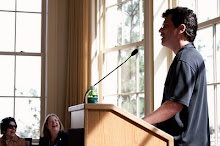After running through tidbits from Jane Austen's Letter 44 which I found noteworthy, I decided to first do a separate post for what is perhaps the most intriguing aspect of Letter 44—for me, at least---which is not in the text of the letter at all, but in its provenance. I notice this quite by accident while browsing in Le Faye’s footnotes to find out about “the famous Saunders” [she had no info on who he was]. Out of the corner of my eye, I saw the words “Jerome Kern 1927”, and my gaze froze in my tracks—Jerome Kern!
It took me about 20 minutes of Googling thereafter to discern all of the following factoids:
Not only did the famous Broadway and Hollywood composer Jerome Kern (1885-1945) own JA’s Letter 44 from 1927-1929, it turns out that he also owned first editions of _all_ of JA’s novels! So, it is not too bold a leap to infer that during the late Twenties, if not for longer, Jerome Kern was a huge Janeite! From what I also infer, he sold all his valuable literary collectibles in 1929, due to a steep dip in his personal balance sheet due to the stock market crash which is forever associated with the year 1929.
Kern also collaborated with Oscar Hammerstein in 1927 in writing the hugely successful (and socially controversial and groundbreaking) Broadway show _Show Boat_--which just happens to have at its core the theme of racial prejudice, and also has a mysterious charismatic dark skinned young man with great theatrical abilities who shows up out of nowhere and steals the heart of the daughter of a mixed-race marriage, only to abandon her (although in the end he comes back to her). Hmm……. Hmm…….
That takes on extra significance when I connect the dots to what I wrote about last year about the veiled allusion to “rears and vices” in the Royal Navy in Mansfield Park that I detected when I saw the Broadway revival of South Pacific, the book of which was written by none other than that same Oscar Hammerstein:
http://sharpelvessociety.blogspot.com/2011/09/gay-subtext-in-zombie-books-south.html
Very interesting……
And last but not least, in 1934, Kern and Hammerstein wrote a play for the London stage entitled “Three Sisters” which had a 72-performance run at Theatre Royal Drury Lane, described as follows:
“It traces the romantic travails suffered over a few years in the lives of itinerant photographer Will Barbour's three daughters. Tiny, the eldest , anticipates a placid married life with steady, dullish fiancee Eustace, but she's waylaid by antic street busker George. His performing partner Gypsy is a serial Romeo distracted from the chase by adoring youngest sis Mary. Only middle sib Dorrie wants out of this scrape-along, carnival-to-circus lifestyle. Her social ambitions do attract earnest attention from upper-crust dreamboat Sir John. Spousal wanderlust, class snobbery and the advent of WWI provide moments of heartbreak for each Barbour girl before happy endings arrive.”
While there is nothing in that plot summary per se that leaps off the page as an obvious Austen allusion, the courtship of sisters across social & economic class takes on a distinctly Austenesque aura when we consider it in light of all of the Austen connections I have outlined, above.
All of this, among other things, reconfirms to me that Kern and Hammerstein (who were chummy, by the way, with another Janeite, PG Wodehouse) were passionate Janeites, and Kern did not just mindlessly collect Austen memorabilia as a financial investment, but he and his collaborator were both dedicated and subtle readers of Jane Austen’s novels, and both understood that she was writing about much more than just 3 or 4 families in a country village.
Cheers, ARNIE
Popular Posts
- Deirdre Le Faye & Me: "I am a scholar, she is a scholar: so far we are equal"
- Darcy's "We neither of us perform to strangers": a Radical New Interpretation
- The Hunger Games’s Veiled Allusion to Shakespeare’s Titus Andronicus
- Rick Santorum would have been the worst person in the world to Jane Austen too!
- August Wayne Booth in Once Upon A Time: Jane Austen Really IS Everywhere in 2012!
- 20 shades of hero/villain Mr. Darcy
- Can Jane Austen forgive Marianne?
- Miss Bennet, Elizabeth, Lizzy, Eliza: who calls her what....and why
- The Great Gadsby: an overnight lesbian feminist ‘comedy’ sensation 10+ years in the making (& 3 millenia overdue)
- Austenland: The Movie was Fun, but the Novel was Better [SPOILER ALERT as to both]
Subscribe to:
Post Comments (Atom)

No comments:
Post a Comment